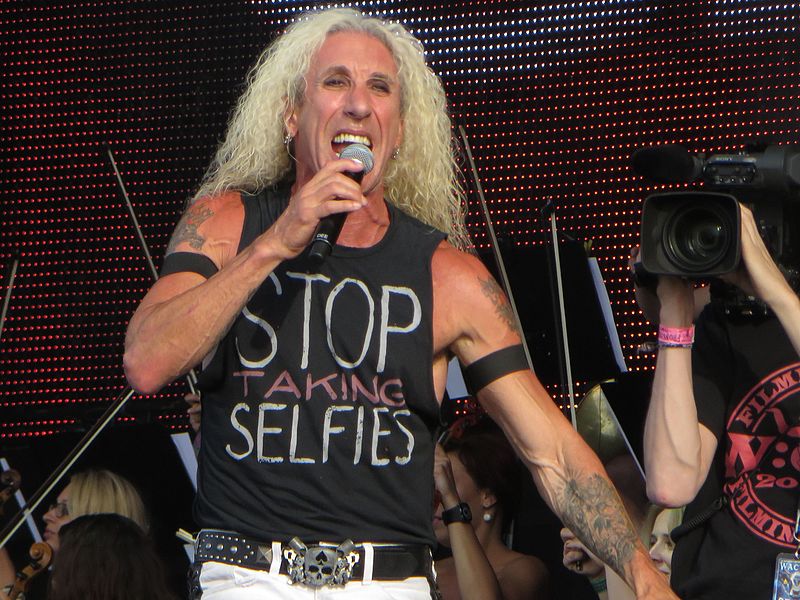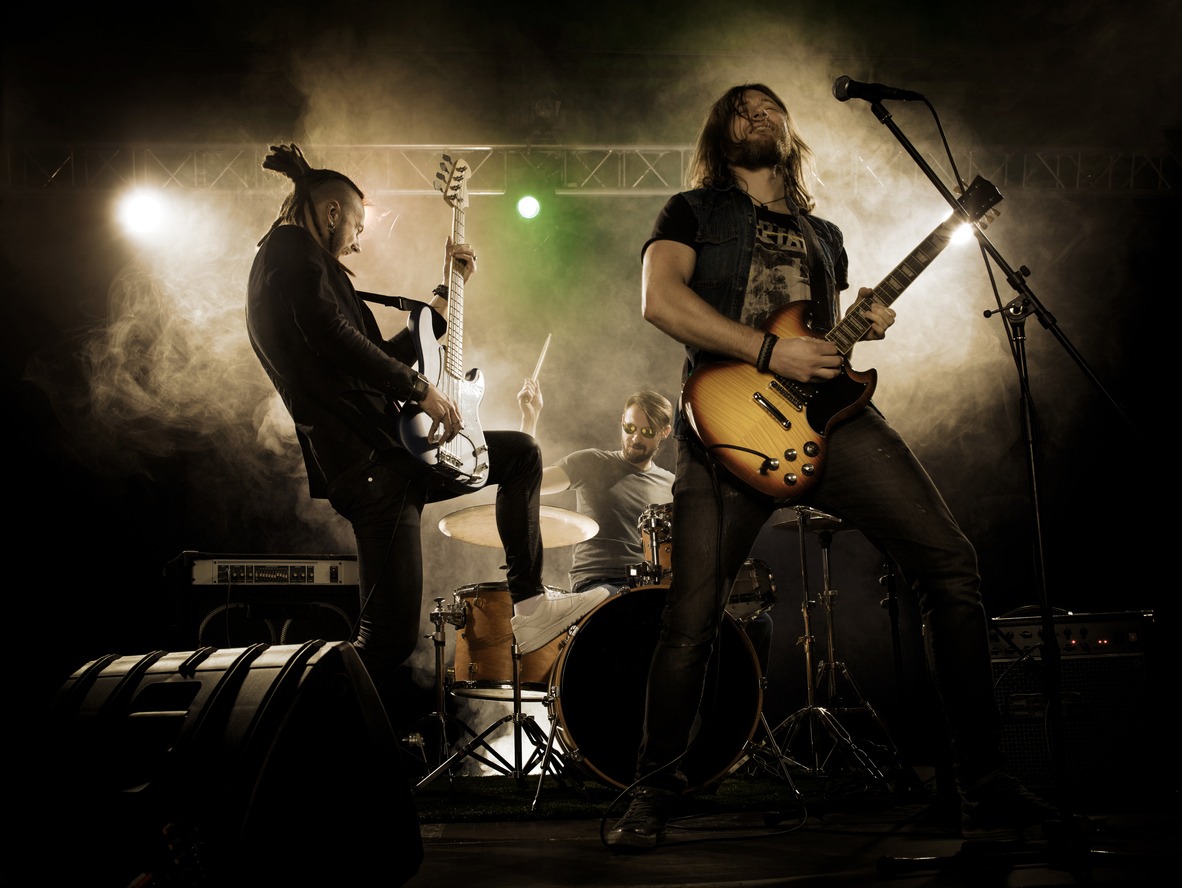In the 1980s, the music scene witnessed the rise of an extravagant and flamboyant genre: glam metal, also known as hair metal. Characterized by its over-the-top fashion, heavy use of makeup, and theatrical performances, glam metal was a cultural phenomenon more than a musical style. Bands in this genre combined the hard-hitting elements of heavy metal with the glitz and glamour of rock and roll, creating a unique sound that dominated the airwaves and MTV.
This era of glam metal and hair bands brought a new level of spectacle to the music world. With their larger-than-life stage personas, elaborate hairstyles, and catchy power ballads, these bands captured the hearts of millions, leaving an indelible mark on the decade. From the Sunset Strip in Los Angeles to worldwide fame, these bands redefined the boundaries of rock music, both in sound and style. This article delves into the vibrant world of ‘80s glam metal and hair bands, exploring their origins, cultural impact, and enduring legacy.
Origins and Evolution of Glam Metal

Glam metal, also known as hair metal, is a subgenre of heavy metal music that combines elements of hard rock and glam rock. It originated in the late 1970s and gained widespread popularity in the 1980s. The genre is known for its flamboyant and ostentatious fashion, theatrical performances, and catchy, anthem-like music.
Early Influences and Origins (Late 1970s – Early 1980s)
The origins of glam metal can be traced back to the glam rock movement of the early 1970s. Bands like T. Rex, David Bowie, and Slade, known for their theatrical stage presence and androgynous looks, significantly influenced the visual aspect of glam metal. However, the sound of glam metal was more directly influenced by hard rock and early heavy metal bands such as Led Zeppelin, Aerosmith, and Alice Cooper.
In the late 1970s and early 1980s, bands like Mötley Crüe and Twisted Sister began to emerge, blending the hard-hitting sounds of heavy metal with the flashy aesthetics of glam rock. They emphasized catchy hooks, guitar solos, and anthemic choruses while also adopting a more extravagant and visually striking fashion style that included tight leather clothing, spandex, makeup, and big hair.
Commercial Peak and Mainstream Success (Mid-1980s)
The mid-1980s marked the commercial peak of glam metal. The genre’s popularity was bolstered by the rise of MTV and the music video era, which helped glam metal bands gain a wider audience. Bands like Poison, Bon Jovi, and Cinderella achieved massive success with a series of hit singles and albums. Their music videos, characterized by flashy visuals and an emphasis on the band’s image, played a crucial role in their popularity.
Glam metal concerts were often large-scale, theatrical events with elaborate lighting, pyrotechnics, and stage sets. The genre’s lyrics often revolved around themes of love, sex, partying, and rebellion, resonating with a youthful audience.
Evolution and Diversification (Late 1980s – Early 1990s)
Towards the late 1980s, glam metal began to diversify and evolve. Some bands started incorporating elements of blues, funk, and even pop into their music. Guns N’ Roses, for example, offered a grittier, more streetwise variation of glam metal, which contrasted with the more polished sound of bands like Def Leppard.
However, by the early 1990s, the glam metal scene began to decline in popularity, largely overshadowed by the emergence of grunge and alternative rock. Bands like Nirvana and Pearl Jam offered a stark contrast to the glam metal aesthetic with their more subdued fashion and introspective lyrics.
Legacy and Influence
Despite its decline in the early 1990s, glam metal has left a lasting impact on the music industry. The genre’s emphasis on showmanship and style has influenced various other music genres. Additionally, many glam metal bands have experienced a resurgence in popularity in the 21st century, with reunion tours and new releases. Glam metal’s influence can still be seen in contemporary music, fashion, and culture, highlighting its enduring legacy in the world of rock music.
Characteristics of Glam Metal and Hair Bands

Glam metal, synonymous with hair metal due to the flamboyant hairstyles of its musicians, is characterized by a distinctive blend of visual flair and musical elements. This genre, which rose to prominence in the 1980s, is marked by a unique fusion of hard rock’s intensity and glam rock’s theatricality. Here, we explore the key characteristics that define glam metal and its bands:
1. Musical Style
- Catchy Melodies and Anthemic Choruses: Glam metal songs often feature infectious, sing-along choruses and memorable hooks that make them radio-friendly and accessible.
- Guitar-Driven Sound: Prominent, flashy guitar solos and riffs are a staple of the genre. Guitarists often showcase technical prowess and flamboyance in their playing.
- Influence of Hard Rock and Blues: Many glam metal bands incorporate elements of hard rock and blues, which is evident in their guitar solos and rhythmic structures.
- Pop Sensibilities: Unlike other metal subgenres, glam metal often embraces pop sensibilities, making it more commercially appealing with a wider audience reach.
2. Visual and Fashion Style
- Extravagant and Flamboyant Attire: Glam metal artists are known for their over-the-top fashion choices, including spandex, leather, animal prints, and bright colors.
- Big Hair: The “hair” in hair metal is not an understatement; band members often sport teased, voluminous hairstyles achieved through copious amounts of hairspray. Find out more in our post about the popular hair and makeup styles in the 1980s.
- Makeup and Glamour: Makeup, including eyeliner and lipstick, is commonly used by male and female performers alike, emphasizing the genre’s roots in glam rock.
- Theatrical Stage Presence: Glam metal concerts are akin to theatrical performances, with elaborate lighting, pyrotechnics, and stage props.
3. Themes and Lyrics
- Party and Hedonistic Lifestyle: Many glam metal songs revolve around themes of partying, sex, love, and a carefree, hedonistic lifestyle.
- Rebellion and Empowerment: Lyrics often include themes of rebellion against societal norms, personal empowerment, and the rock and roll lifestyle.
- Romance and Heartbreak: Love, relationships, and heartbreak are common lyrical themes, often delivered with a sense of drama and emotion.
4. Media and Promotion
- Music Videos: The advent of MTV played a significant role in the popularity of glam metal. Bands produced visually engaging music videos that highlighted their aesthetic and musical style.
- Promotion and Imagery: Glam metal bands often used provocative and eye-catching album covers and promotional materials to garner attention.
5. Influence and Legacy
- Influence on Future Genres: While glam metal declined in popularity with the rise of grunge in the 1990s, it influenced later genres and artists, especially in terms of visual presentation and stagecraft.
- Cultural Impact: The genre had a significant impact on fashion and pop culture during its heyday, influencing trends beyond the realm of music.
6. Criticism and Reception
- Critique of Superficiality: Critics often pointed out the perceived superficiality and lack of substance in glam metal, focusing on its emphasis on image over musical complexity.
- Diverse Fan Base: Despite criticism, glam metal garnered a large, diverse fan base and achieved significant commercial success, particularly in the 1980s.
Iconic Bands and Musicians

Glam metal and hair bands produced several iconic bands and musicians renowned for their musical prowess, theatricality, and distinctive fashion. These artists were not only pivotal in defining the genre but also became influential figures in rock music. Here’s a look at some of the most iconic bands and musicians in the glam metal and hair band scene:
- Mötley Crüe: Epitomizing the glam metal ethos with their hedonistic lifestyle, Mötley Crüe was known for their hard-hitting songs and notorious off-stage antics. Classics like “Dr. Feelgood,” “Girls, Girls, Girls,” and “Kickstart My Heart” showcased their signature blend of raucous rock and glam flair.
- Poison: With their flamboyant style and catchy tunes, Poison became one of the genre’s most popular acts. Hits like “Every Rose Has Its Thorn” and “Talk Dirty to Me” are emblematic of their accessible glam metal sound.
- Bon Jovi: Bon Jovi achieved massive success by blending glam metal with a more mainstream rock appeal. Songs like “Livin’ on a Prayer” and “You Give Love a Bad Name” remain timeless anthems.
- Def Leppard: Known for their polished sound, Def Leppard’s music had broad appeal, with albums like “Pyromania” and “Hysteria” becoming global hits. Tracks like “Pour Some Sugar on Me” and “Photograph” helped redefine the genre.
- Guns N’ Roses: Guns N’ Roses brought a grittier, more raw form of glam metal, gaining immense popularity for their unbridled energy and attitude. Their debut album, “Appetite for Destruction,” featuring hits like “Sweet Child o’ Mine,” is a milestone in rock history.
- Twisted Sister: Known for their anthemic tracks like “We’re Not Gonna Take It,” Twisted Sister combined heavy metal with a punk ethos. Their over-the-top image and high-energy performances were a hallmark of their style.
- Cinderella: Cinderella’s music stood out for its blues-infused rock sound, evident in hits like “Nobody’s Fool” and “Gypsy Road.” They were known for their ability to blend hard rockers with heartfelt ballads.
- W.A.S.P.: W.A.S.P. was known for their controversial and provocative stage shows, pushing the boundaries of the glam metal image. Songs like “I Wanna Be Somebody” and “Blind in Texas” showcased their distinct style.
- Ratt: Ratt was characterized by its catchy guitar riffs and melodic hooks, as heard in hits like “Round and Round.” They remained a prominent fixture in the glam metal scene throughout its peak years.
- Skid Row: Emerging later in the glam metal era, Skid Row made a significant impact with a slightly heavier sound. Their hits “18 and Life” and “I Remember You” showcased both their hard rock edge and lyrical depth.
These bands and musicians not only defined the aesthetic and sonic landscape of glam metal and hair bands but also contributed significantly to the broader narrative of rock music. Their legacy continues to influence contemporary artists and remains a cherished part of rock history.
Glam Metal and Its Cultural Impact

Glam metal had a profound impact on both the music industry and popular culture. Characterized by its flamboyant fashion, theatrical performances, and catchy, anthem-like music, glam metal transcended mere musical trends to become a cultural phenomenon. Here’s an exploration of its multifaceted cultural impact:
Fashion and Style
- Visual Aesthetics: Glam metal bands were known for their extravagant and often androgynous attire, including tight leather or spandex outfits, bandanas, and excessive makeup. This distinctive style influenced 1980s fashion trends, encouraging a generation of fans to emulate their favorite musicians.
- Hair Trends: The “big hair” looks of glam metal bands, achieved with copious amounts of hairspray, became iconic. It influenced hair fashion far beyond the confines of rock music, becoming a signature look of the 1980s.
Music and Media
- MTV and Music Videos: The rise of MTV in the 1980s coincided with the peak of glam metal. Bands utilized music videos not just to showcase their songs but also their unique style and theatrics, making them staples on the channel.
- Mainstream Popularity: Glam metal brought heavy metal to a mainstream audience. Bands like Bon Jovi and Def Leppard achieved significant chart success, making heavy metal more accessible and less niche.
Influence on Other Genres
- Pop and Rock Fusion: Glam metal bands often incorporated pop-like melodies and hooks into their music, influencing the direction of future rock and even pop genres.
- Influence on Future Metal Subgenres: Elements of glam metal, especially its theatricality and emphasis on showmanship, can be seen in later metal subgenres.
Societal Impact
- Gender Norms and Androgyny: The androgynous style of many glam metal musicians challenged traditional gender norms and contributed to broader discussions about gender identity and expression in society.
- Lifestyle and Hedonism: Glam metal was synonymous with a hedonistic lifestyle, often glorifying themes of partying, sex, and drugs. This aspect of the genre had a significant impact on the perceptions and attitudes of its fanbase.
Commercialization and Consumerism
- Merchandising and Branding: Glam metal bands were often heavily marketed, with their logos and images appearing on a wide range of merchandise, from clothing to accessories, highlighting the commercial aspect of the genre.
- Role in Music Industry Economics: The commercial success of glam metal bands played a significant role in the music industry of the 1980s, driving record sales, concert revenues, and merchandise.
Decline and Legacy
- Transition to Grunge and Alternative Rock: The early 1990s saw a shift in musical tastes as grunge and alternative rock began to dominate, leading to a rapid decline in the popularity of glam metal.
- Enduring Influence: Despite this decline, the influence of glam metal continues to be felt. Nostalgia for the era has led to revival tours and a continued fan base. Moreover, its impact on fashion, music video culture, and the broader rock genre remains significant.
In summary, glam metal was a cultural movement that influenced fashion, challenged societal norms, and left an indelible mark on the music industry. Its flamboyant style, catchy music, and larger-than-life persona have ensured its place in the annals of music history.
Criticism and Controversy

Glam metal, while immensely popular and influential in its heyday, was not without its share of criticism and controversy. This genre, known for its over-the-top aesthetics and anthemic tunes, faced various critiques from both within and outside the music industry. These criticisms and controversies largely revolved around its artistic integrity, lifestyle promotion, and cultural impact.
- Musical Substance and Artistic Depth: Critics often accused glam metal of prioritizing style over substance, focusing more on image and theatrics than on musical depth. The genre was sometimes critiqued for its formulaic songwriting and reliance on simple, catchy hooks rather than complex musical compositions, contrasting sharply with other rock and metal subgenres renowned for their technical proficiency.
- Promotion of Hedonistic Lifestyles: Glam metal bands were known for their lyrics and lifestyles that often glorified hedonism, including casual sex, drug use, and excessive partying. This led to criticism from conservative circles and concern about the message being sent to younger audiences. The lifestyle promoted and often lived by members of glam metal bands led to numerous personal issues, including substance abuse problems and legal troubles, which garnered negative media attention.
- Gender Representation and Sexism: The genre was frequently criticized for its portrayal of women in music videos and lyrics, often accused of objectifying women and perpetuating sexist attitudes. The androgynous fashion and makeup of glam metal musicians also sparked debates about traditional gender norms and masculinity, sometimes leading to backlash from more conservative audiences.
- Commercialization and Authenticity: The commercial success of glam metal led to accusations of over-commercialization, with critics arguing that the genre was more about making money than making meaningful music. The heavy marketing and branding associated with glam metal bands raised questions about the authenticity of their music and whether they were truly artists or merely products of record company promotion.
- Impact on the Music Industry: Some critics and fans of other rock and metal subgenres viewed glam metal as having a negative impact on the broader genres, accusing it of overshadowing more ‘serious’ and ‘authentic’ forms of rock and metal. The rise of grunge and alternative rock in the early 1990s, which often positioned itself in direct opposition to glam metal, was partly seen as a response to these criticisms, leading to the rapid decline of glam metal’s popularity.
- Backlash and Parody: Glam metal’s over-the-top nature made it a target for parody and mockery in various media, contributing to a sometimes-negative public perception. Within the music community, especially with the rise of grunge, there was a notable backlash against glam metal, with many artists and fans dismissing the genre as outdated and superficial.
While glam metal played a significant role in shaping 1980s music and culture, it also faced considerable criticism and controversy, much of which centered around its perceived lack of musical depth, promotion of a hedonistic lifestyle, issues with gender representation, and questions about its commercialization and authenticity. These factors contributed to the genre’s decline but also to the ongoing discussions about its place and impact in music history.
Decline and Legacy

The history of glam metal, a genre that dominated the rock scene in the 1980s, is marked by both a dramatic rise in popularity and a swift decline. Despite this decline, the genre has left a lasting legacy in the world of music and popular culture. This section explores the factors leading to its decline and the enduring impact it has had.
Decline of Glam Metal
- Shift in Musical Trends: By the early 1990s, musical tastes were shifting. The emergence of grunge, spearheaded by bands like Nirvana and Pearl Jam, offered a stark contrast to glam metal both in sound and aesthetics. Grunge was seen as more authentic and introspective, resonating with a generation that was increasingly disenchanted with the perceived superficiality of the 1980s.
- Changing Cultural Attitudes: The flamboyant and hedonistic lifestyle glam metal represented began to fall out of favor. There was a growing appetite for music that was considered more ‘real’ and ‘raw,’ which grunge and alternative rock seemed to fulfill.
- Media and Industry Shift: Media outlets, particularly MTV, which had been instrumental in the rise of glam metal, shifted their focus towards grunge and alternative rock, contributing to the decline in popularity of glam metal. Record labels began signing and promoting bands that aligned with the emerging trends, diverting resources away from glam metal.
- Internal Issues within Bands: Many glam metal bands struggled with internal issues, including substance abuse and personal conflicts, which often led to breakups or declines in the quality of their music.
Legacy of Glam Metal
- Influence on Future Music: Despite its decline, glam metal has influenced various aspects of rock and metal genres that followed. The emphasis on showmanship and spectacle in live performances can be traced back to the flamboyance of glam metal. Certain musical elements, such as the catchy hooks and anthem-like choruses, have been adopted by later bands and genres.
- Fashion and Aesthetics: The visual style of glam metal, especially its androgynous and extravagant fashion, left a lasting impact on the fashion world. It broke down gender barriers in fashion and continues to inspire designers and artists.
- Cultural Iconography: Glam metal bands and their music remain an iconic part of 1980s culture. Songs by bands like Bon Jovi and Mötley Crüe are still popular on classic rock radio stations and in popular media, evoking nostalgia for the era.
- Revival and Nostalgia: There has been a resurgence of interest in glam metal, with bands reuniting for tours and new release and a younger generation discovering the music through digital platforms. The genre’s influence is also seen in movies, documentaries, and television shows that portray or reference the 1980s and its music scene.
- Influence on Live Performances: The elaborate stage shows and theatrical performances of glam metal bands have influenced the live performance style of many modern artists across various genres.
While glam metal’s popularity declined in the face of changing musical and cultural landscapes, its legacy endures. It remains a significant chapter in the history of rock music, notable for its impact on fashion, live performance, and the broader cultural ethos of its time. The genre’s influence can still be seen and felt in various aspects of contemporary music and culture.
Conclusion
Glam metal, a genre that emerged in the 1980s, left a permanent mark on the music industry and popular culture. Characterized by its loud style, anthemic music, and theatrical performances, it dominated the rock scene before experiencing a sharp decline in the early 1990s due to shifting musical trends. Despite this, the legacy of glam metal endures, influencing fashion, live performances, and music across various genres. Its impact is still celebrated and remembered, a testament to its unique place in the history of rock music.

